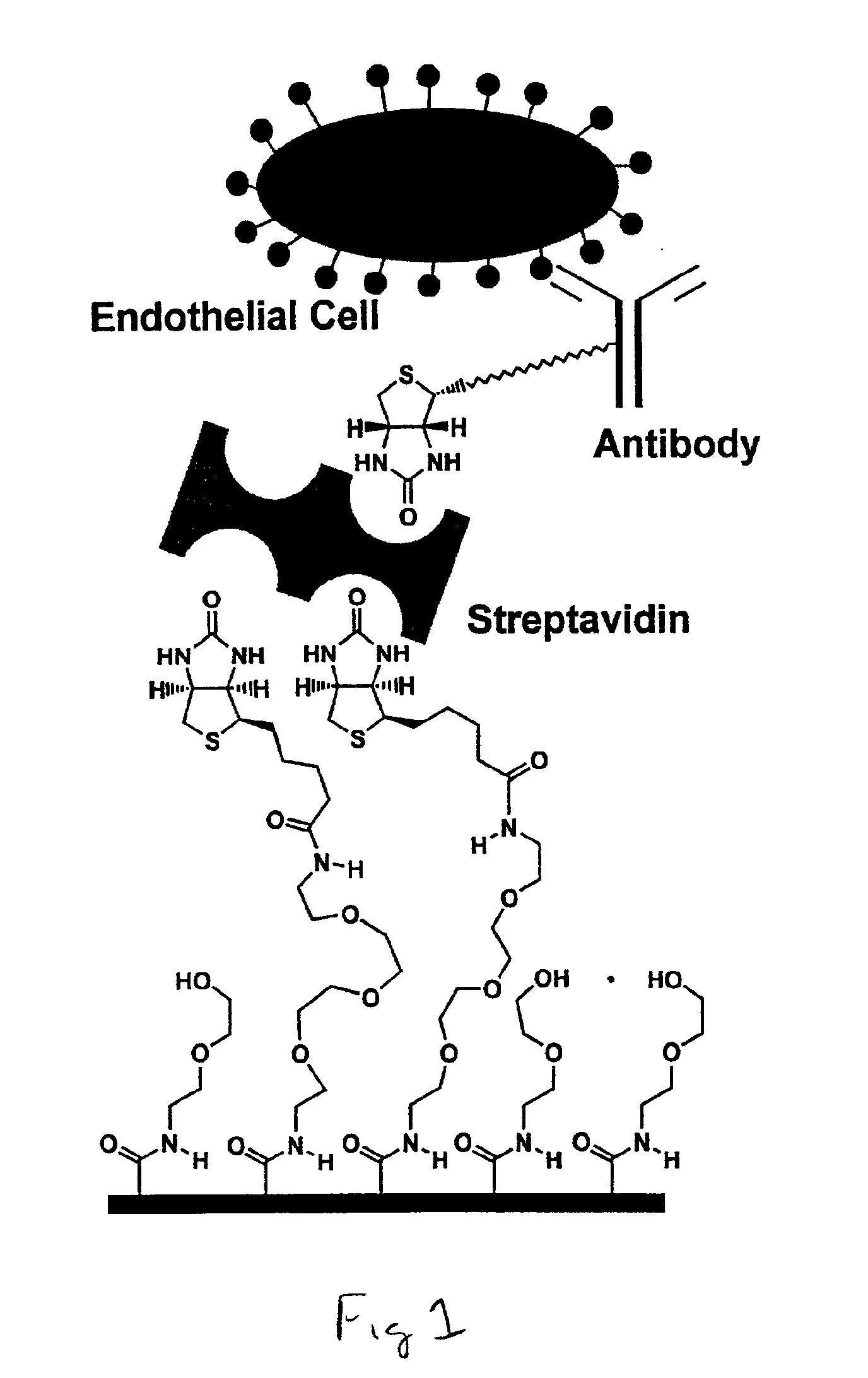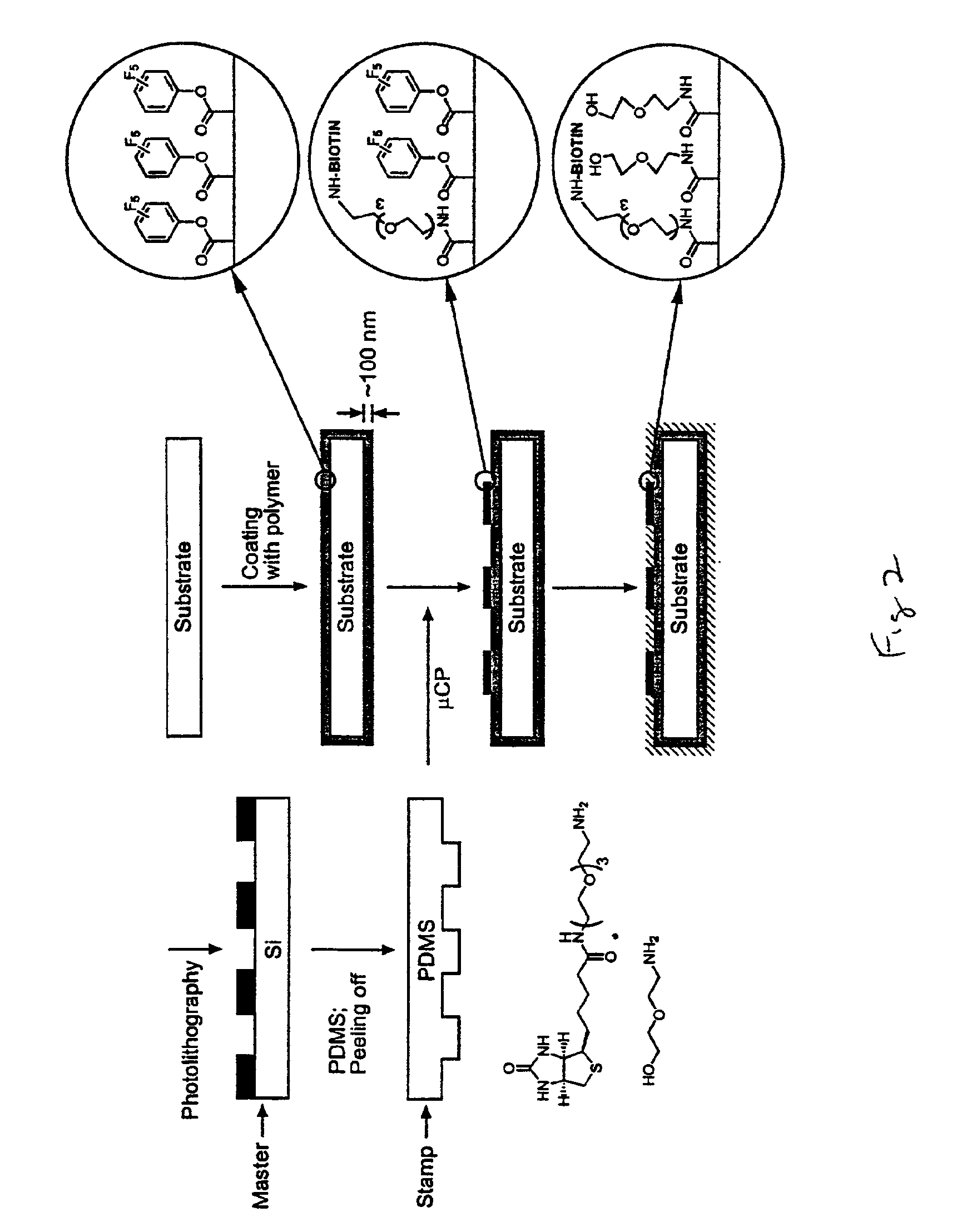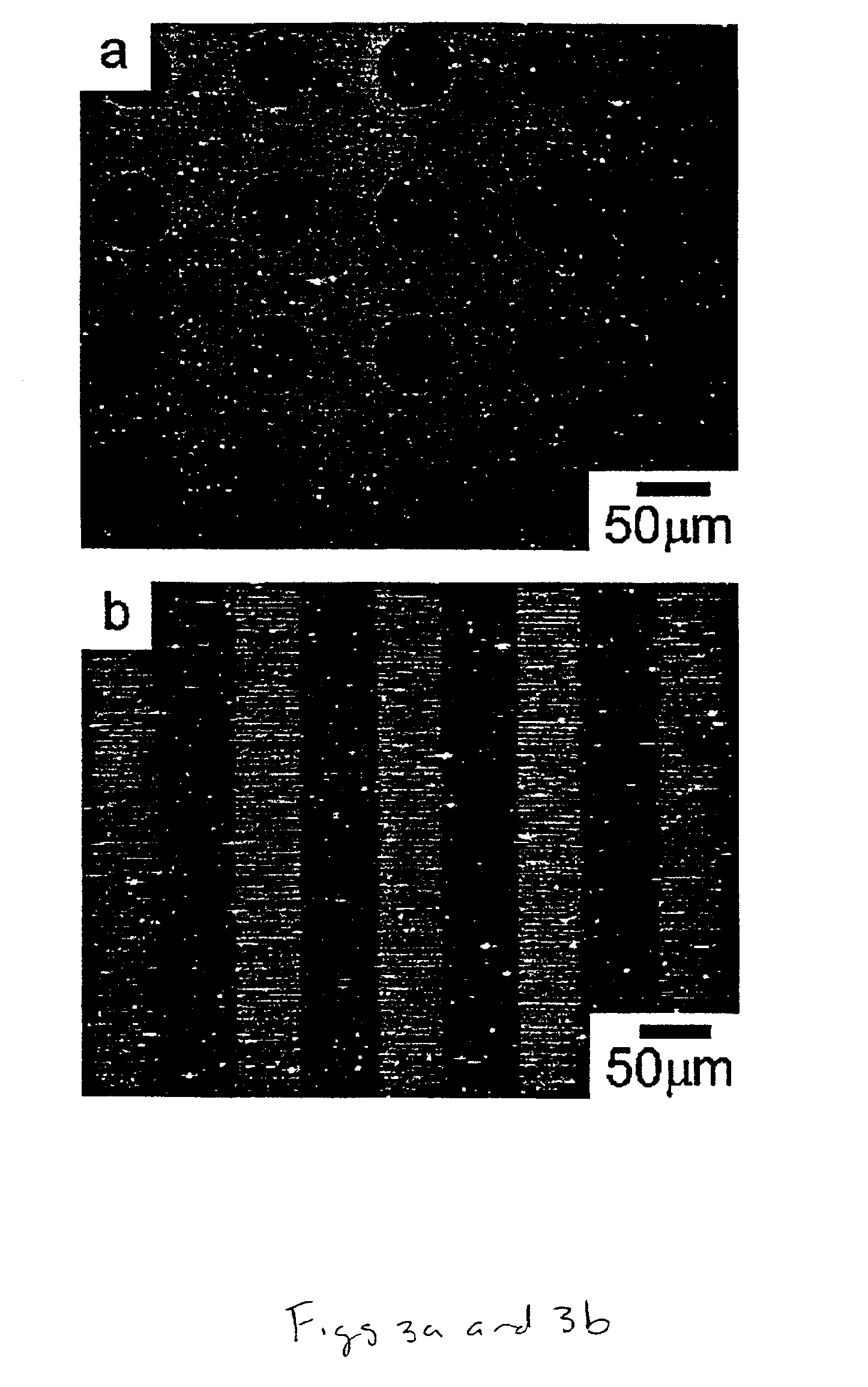Reactive polymer coatings
- Summary
- Abstract
- Description
- Claims
- Application Information
AI Technical Summary
Benefits of technology
Problems solved by technology
Method used
Image
Examples
example 1
[0051]Using mask techniques as known from microlithography during the CVD coating, a microstructured surface consisting of two poly(p-xylylene)s, defined as area A and B etc. with two different types of functional groups can be created (e.g. carboxylic and amino groups: see FIG. 1). Since both types of functional groups can be activated separately the independent immobilization of two or more peptides, proteins, cell receptors, cytokines, inhibitors oligonucleotides, DNA strains, polysaccharides, etc. is possible. This offers an independently tunable interaction of different surface areas with cells. For instant cell adhesion receptors may be immobilized on area A, whereas adhesion inhibitors are immobilized on area B, and so on.
[0052]For some applications a strict separation of different types of functional groups may not be suitable. In those cases it is also possible to design areas containing mixtures of different functional groups. Alternatively a coating containing repetition ...
example 2
[0053]Instead of using mask techniques, microstructuring may be achieved by stamping using e.g. a PDMS or poly(urethane) stamp. This technique may be conducted in two variations. First, an activated poly(p-xylylene) surface can be patterned with a stamp that is previously exposed to a target molecule. Second, a per se non-reactive poly(p-xylylene) surface is activated using a stamp. Subsequently, the whole surface area is exposed to a solution containing the target molecule.
example 3
[0054]Micro-structuring is achievable by selective growth of poly(p-xylylene) as a pretreatment of the substrate with a polymer inhibitor which selectively avoids the polymer coating of certain areas. Mainly metal salts are known to induce selective growth for unsubstituted poly(p-xylylene). Other radical catcher or retarder, such as hydroquinone may be suitable. This may vary such that known patterning techniques such as self assembled monolayer of alkanthiolate may be used to pattern a surface. The alkanethiolates are equipped with head groups that selectively bind metal salts (e.g. mercapto-alkyl acids). The basic technique is disclosed by Jensen et al.
PUM
| Property | Measurement | Unit |
|---|---|---|
| Temperature | aaaaa | aaaaa |
| Temperature | aaaaa | aaaaa |
| Temperature | aaaaa | aaaaa |
Abstract
Description
Claims
Application Information
 Login to View More
Login to View More - R&D
- Intellectual Property
- Life Sciences
- Materials
- Tech Scout
- Unparalleled Data Quality
- Higher Quality Content
- 60% Fewer Hallucinations
Browse by: Latest US Patents, China's latest patents, Technical Efficacy Thesaurus, Application Domain, Technology Topic, Popular Technical Reports.
© 2025 PatSnap. All rights reserved.Legal|Privacy policy|Modern Slavery Act Transparency Statement|Sitemap|About US| Contact US: help@patsnap.com



